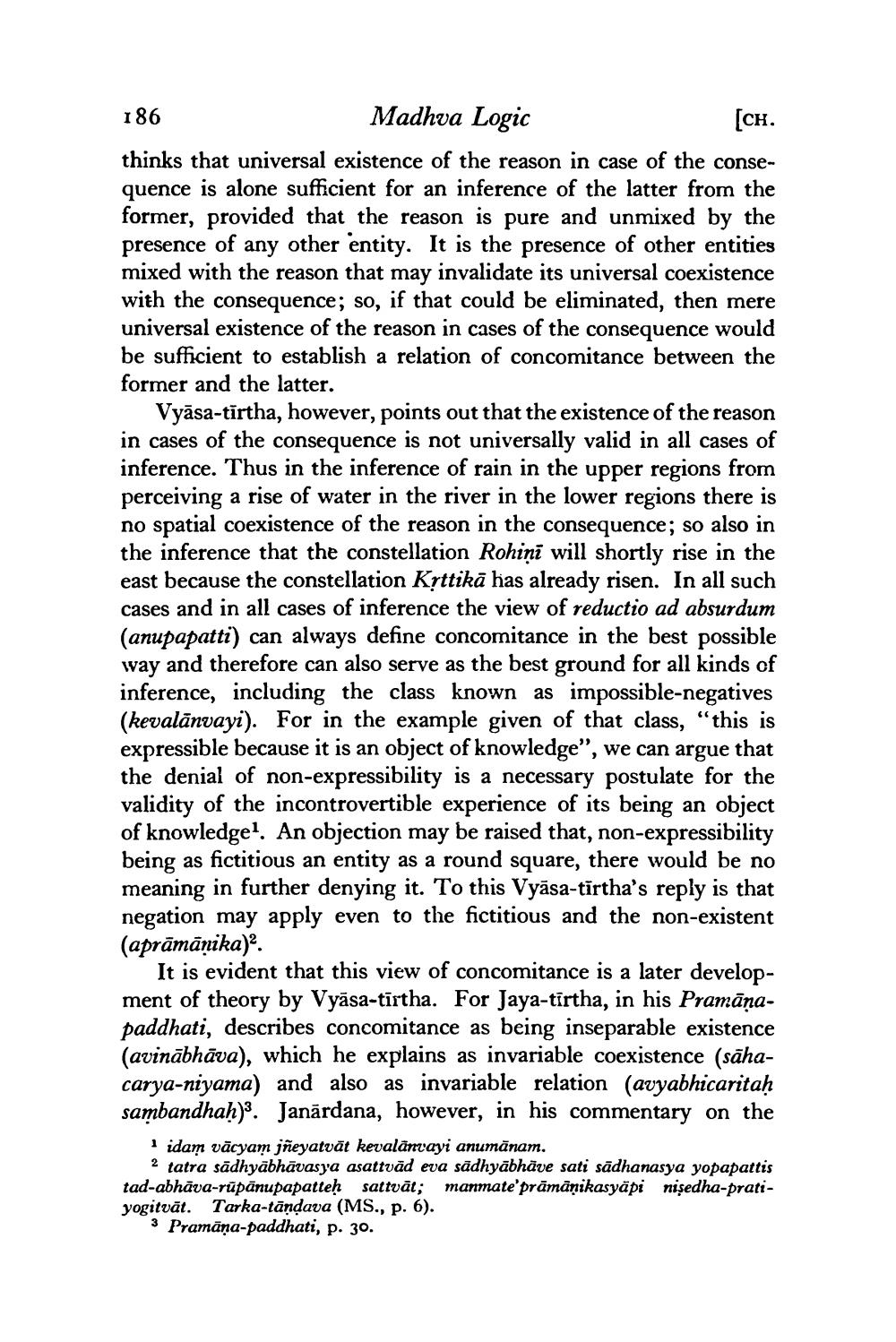________________
186 Madhva Logic
(CH. thinks that universal existence of the reason in case of the consequence is alone sufficient for an inference of the latter from the former, provided that the reason is pure and unmixed by the presence of any other entity. It is the presence of other entities mixed with the reason that may invalidate its universal coexistence with the consequence; so, if that could be eliminated, then mere universal existence of the reason in cases of the consequence would be sufficient to establish a relation of concomitance between the former and the latter.
Vyāsa-tirtha, however, points out that the existence of the reason in cases of the consequence is not universally valid in all cases of inference. Thus in the inference of rain in the upper regions from perceiving a rise of water in the river in the lower regions there is no spatial coexistence of the reason in the consequence; so also in the inference that the constellation Rohini will shortly rise in the east because the constellation Kịttikā has already risen. In all such cases and in all cases of inference the view of reductio ad absurdum (anupapatti) can always define concomitance in the best possible way and therefore can also serve as the best ground for all kinds of inference, including the class known as impossible-negatives (kevalānvayi). For in the example given of that class, "this is expressible because it is an object of knowledge”, we can argue that the denial of non-expressibility is a necessary postulate for the validity of the incontrovertible experience of its being an object of knowledged. An objection may be raised that, non-expressibility being as fictitious an entity as a round square, there would be no meaning in further denying it. To this Vyāsa-tīrtha's reply is that negation may apply even to the fictitious and the non-existent (aprāmānika)?
It is evident that this view of concomitance is a later development of theory by Vyāsa-tīrtha. For Jaya-tirtha, in his Pramānapaddhati, describes concomitance as being inseparable existence (avinābhāva), which he explains as invariable coexistence (sāhacarya-niyama) and also as invariable relation (avyabhicaritaḥ sambandhaḥ). Janārdana, however, in his commentary on the
1 idam vācyam jñeyatvāt kevalānvayi anumānam.
2 tatra sādhyābhāvasya asattvād eva sādhyābhāve sati sādhanasya yopapattis tad-abhāva-rūpānupapattehsattvät; manmate' prāmānikasyāpi nişedha-pratiyogitvāt. Tarka-tāndava (MS., p. 6).
3 Pramāna-paddhati, p. 30.




